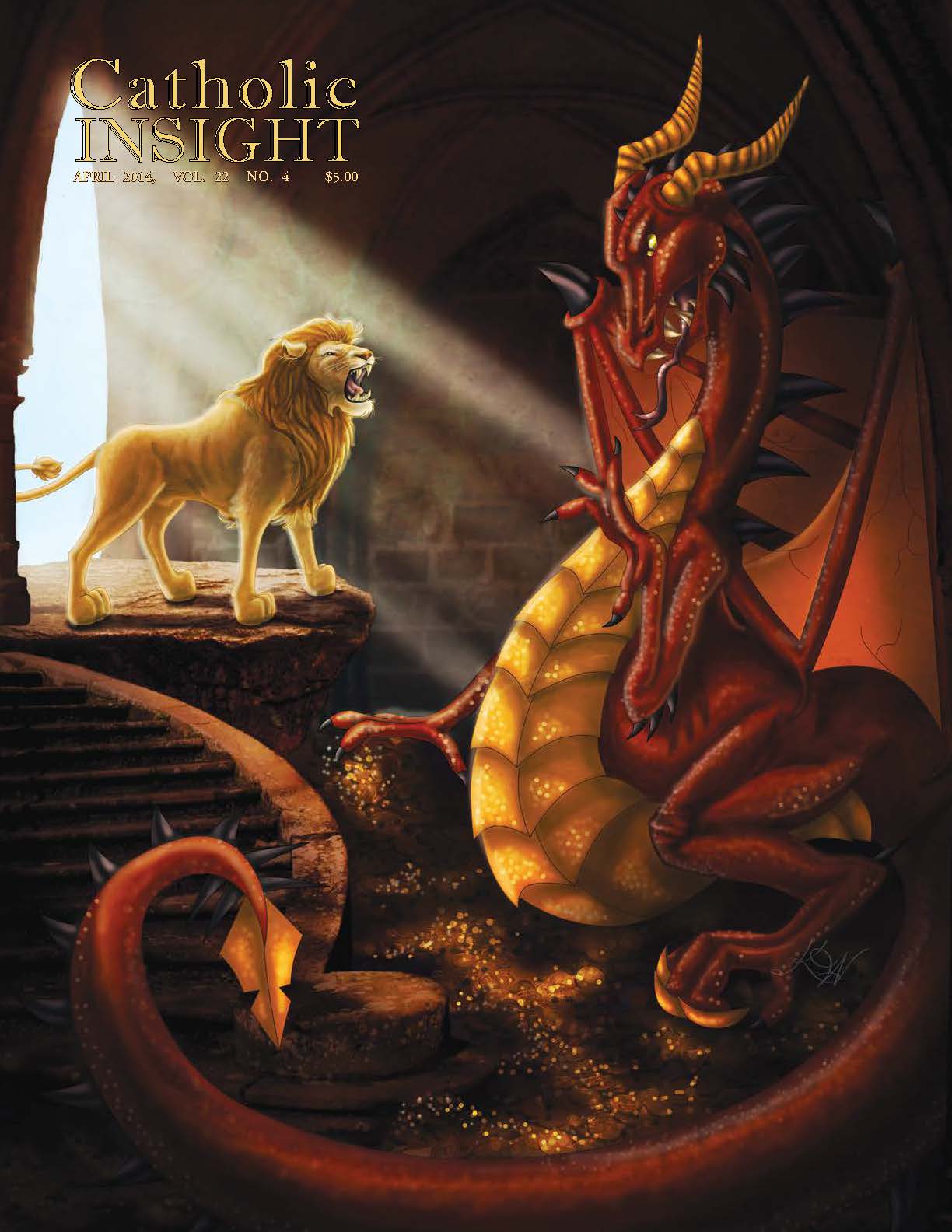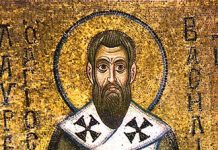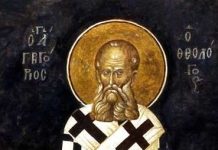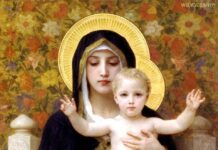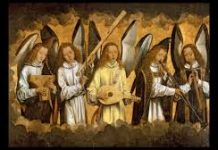Katerina Walker was born in Calgary, Alberta and is the oldest of four children. She attended a French school until grade four, when she began homeschooling. Homeschooling fostered her passion for art, literature, and history, and she continued studying liberal arts at Our Lady Seat of Wisdom Academy, where she graduated with a concentration in History. She currently lives in Calgary with her husband Nathan and her dog, and is working for the Canadian National Institute for the Blind.
What is this piece about?
Literally, this piece is a depiction of C. S. Lewis’ Aslan confronting J. R. R. Tolkien’s infamous dragon Smaug. Aslan has just entered the Great Hall, where Smaug hoards his wealth, and is challenging the dragon. Metaphorically, it is a representation of Good vs. Evil. Aslan is a symbol of Christ, the Lion of Judah. Smaug is a portrayal of the Serpent in the Garden of Eden and the dragon St. George defeats. I wanted the piece to reflect Christ’s descent into Hell; I drew the dragon much larger than the lion to represent the immensity of Christ facing Satan on our behalf. Yet it is the dragon who is afraid of the lion, because there is no real contest. I call the artwork The Gates of Hell after Matthew 16:18, when Christ promises the gates of Hell will not prevail against His Church.
How did you get your start? What drives you to continue?
I have been drawing ever since I could hold a pencil. I used to drive my teachers mad with my constant doodling and ability to turn anything into an art project. I transitioned from a pencil to a computer mouse around age 14, and while I still love to sketch and occasionally paint by hand, digital has remained my favourite medium. I am driven to create art whenever a new idea comes into my head.
Who or what did you learn from?
I took a several years of fine art classes as a child. My skills with Photoshop and the digital medium are self-taught, but even my cartoony, Disney-esque pieces draw from that training in fine art. The more I practice, the more my teacher’s instructions make sense, and the more he continues to teach me. I also enjoy looking up tutorials online, and the more I attempt to imitate other styles, the more I learn about my own.
Are your pieces shown or for sale?
I do upload all of my artwork, scribbles, and doodles to my profile on the art community DeviantART. My best work I also display on my online portfolio at katerinawalker.tk. I occasionally do commission and freelance work as well.
How would you define beauty?
I believe beauty is one of the most obvious and tangible signs of God we have in our world. Whether it is the natural beauty of a flower or a sunset, or the man-made beauty of a cathedral or painting, it reflects who God is. It brings joy to our souls, light to our hearts, and a smile to our lips, and it lifts us higher by edifying, enriching and refining us. God uses earthly beauty to prepare our souls for the Beatific Vision.
What is the purpose of art?
The purpose of art for the artist is to reflect God’s act of creation. Through art, the artist is able to bring forth something new and never-before-seen into the world. The artist comes to know something about God by conceiving an idea in his mind, and then making that idea a part of reality. The purpose of art for the viewer is to participate in beauty.
Who inspires you and what inspires you?
When I get an inspiration for a piece, I usually think of some scene or character and say to myself, “Gee, I wish someone would draw that so I could look at it!” Then I realize that for me to be able to do that, I have to create the art myself. It usually doesn’t end up as nice as I imagined it in my head, but as I learn more and discover new techniques, I am inspired to tackle more and more complex scenes. I draw a lot of inspiration for subjects from history and literature, and inspiration for style from children’s book illustrations and classic 2-D animation.
Do you have any other thoughts you would like to share with our readers?
“Art is limitation; the essence of every picture is the frame. If you draw a giraffe, you must draw him with a long neck. If in your bold creative way you hold yourself free to draw a giraffe with a short neck, you will really find that you are not free to draw a giraffe” (G. K. Chesterton, Orthodoxy).

